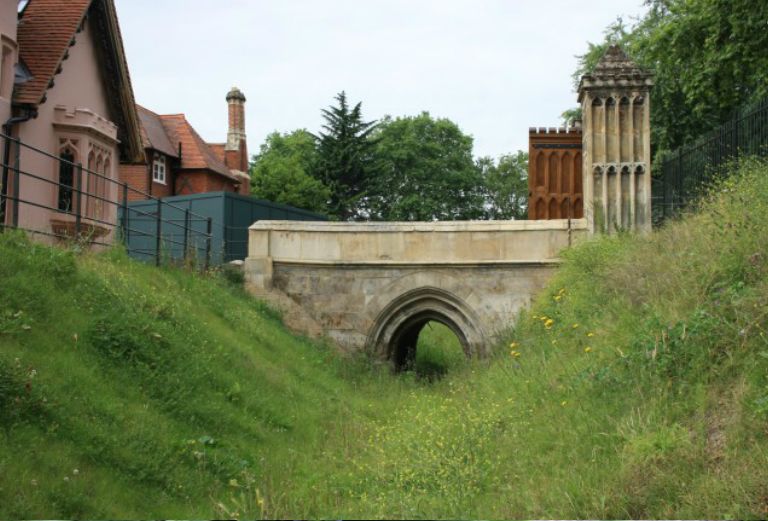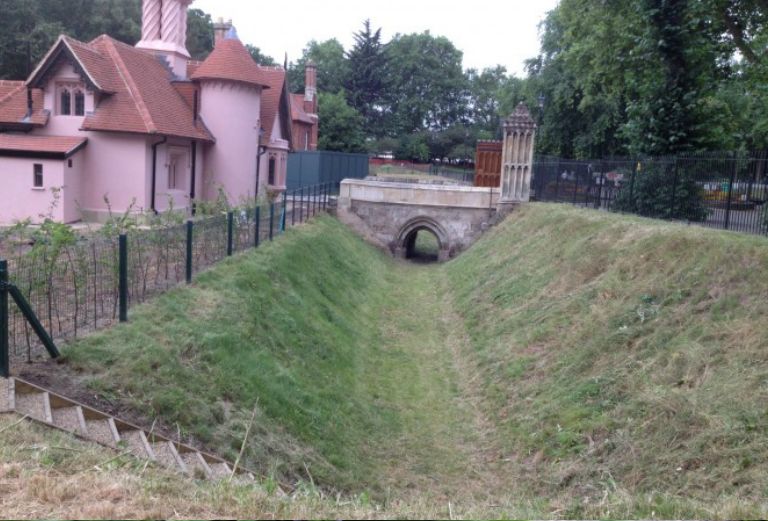
by Lucy Hart, head gardener
This week we started to cut down the vegetation in the section of moat that was re-excavated in 2011 as part of the Heritage Lottery Funding (National Lottery Heritage Fund). We had let it grow wild as there was a pretty display of wildflowers including Woad, Isatis tinctoria, Common Mallow, Malva sylvestris, and Dark Mullein, Verbascum nigrum, providing a pink and yellow colour scheme – all by chance. Over the past week or so it had begun to look a bit tatty and it was time to cut down although the butterflies were still enjoying what blooms were left.
The moat that once surrounded the original 14.5 acres of Fulham Palace grounds is considered to be medieval, but various interpretations on its date and function include an Iron Age or early medieval earthwork and a Roman defended enclosure. It was once the longest moat in England, reaching 1.4 km long. It was filled in in the 1920s by Fulham Council at the request of the Bishop of London, Bishop Winnington-Ingram, who lived in the Palace from 1901 to 1939. That move led to public outcry and the issue was even raised in the Houses of Parliament. The moat had become too expensive to maintain and was home to probably thousands of rats and was badly polluted.
The maintenance of the dry moat area is somewhat tricky. To be able to picture how it functioned to protect the Palace it has been excavated at least 3 metres down, which give a dramatic finish, but also rather steep sloping sides.
Now the moat has been cut short we can keep it short with our smart new petrol hover mower, although there are a couple of other options. We could re-sow with wild flower meadow seed and enhance the existing seed bank and make a beautiful display for people to look down on during the summer, and then keep it short for the winter. It would also be a haven for wildlife in its own sheltered habitat. Another option is to keep sheep or goats within the moat area. They could forage on the vegetation and keep our fuel costs down.
For the time being, we will keep it short and let it tell the story a the Fulham Palace’s unique history.
